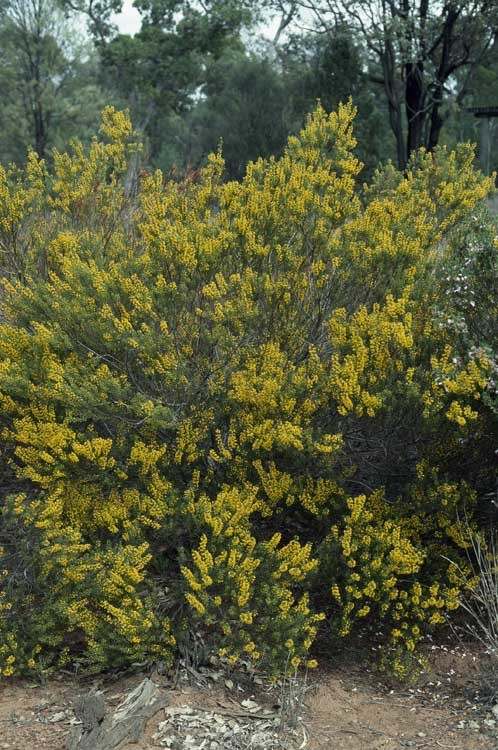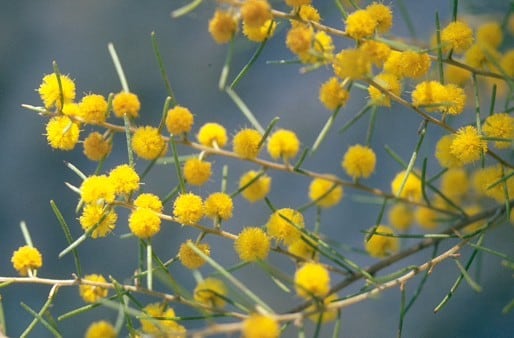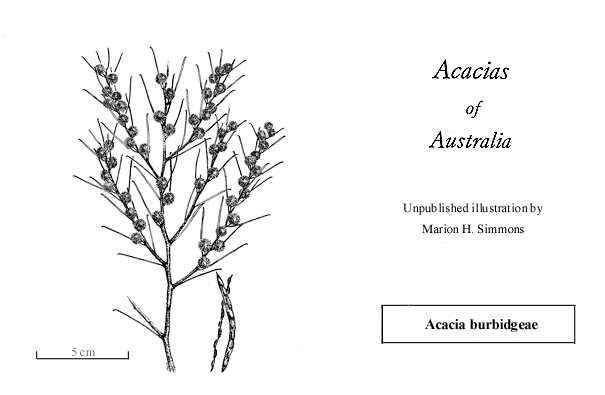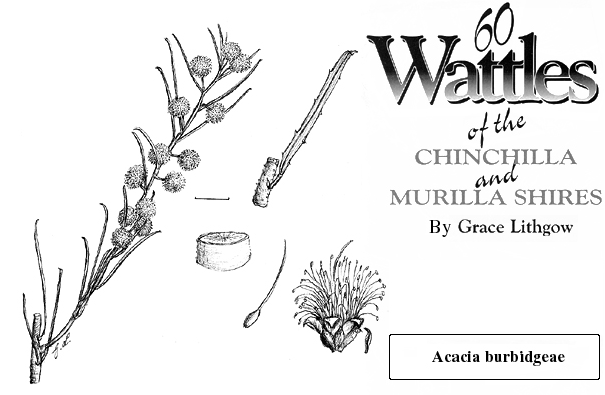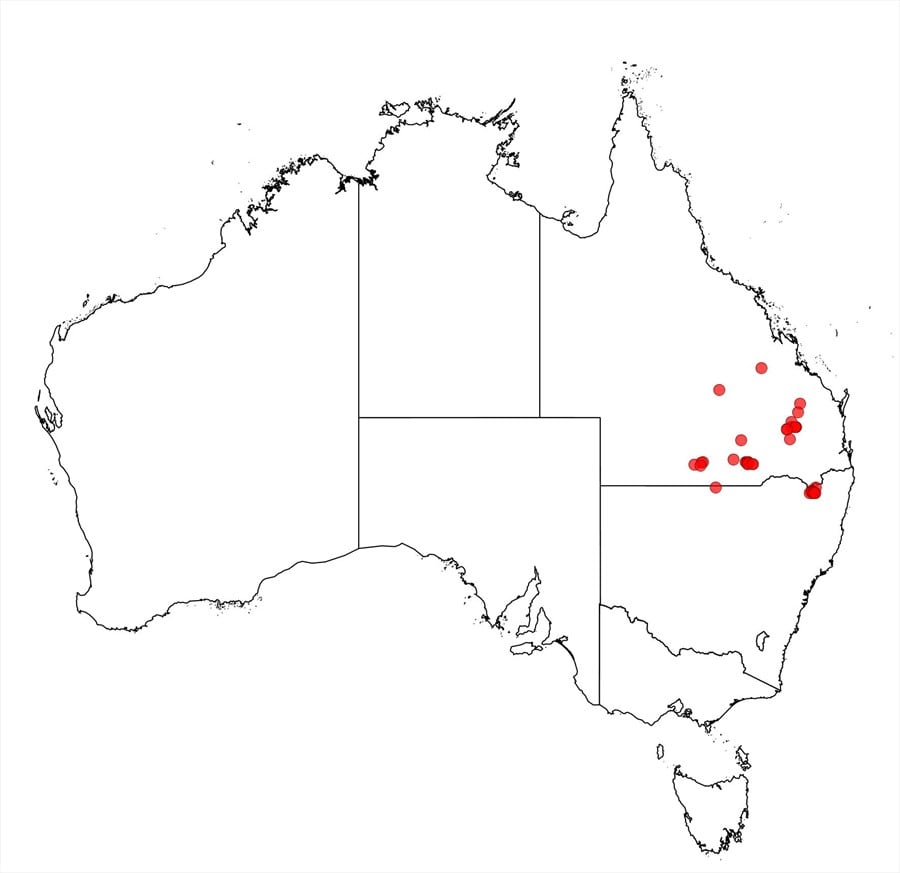Acacia burbidgeae Pedley
WATTLE
Acacias of Australia
Common Name
Burbidge’s Wattle
Family
Fabaceae
Distribution
Disjunct, occurring in south-eastern Qld between Cunnamulla and St George, and the Chinchilla area; a variant occurs near Rolleston; also in north-eastern N.S.W. near Emmaville.
Description
Shrub to c. 2 (-4) m high. Branchlets sparsely to moderately puberulous to hirsutellous, rarely glabrous, slightly resinous. Phyllodes frequently subcrowded, sometimes a few subverticillate or subfasciculate, patent to erect, slender, shallowly incurved, sometimes straight, normally subterete but drying ±triquetrous in section or ±flat and with a discernible longitudinal groove on each face, (15–) 20–45 mm long, 0.5–1 mm wide, with lower edge or margin broader than upper, obliquely and excentrically mucronulate or rostellate, glabrous; gland basal, minute, obscure or absent. Inflorescences simple, 1 per node; peduncles usually 3–6 mm long, glabrous to sparsely puberulous, ebracteate at base; heads globular, (15–) 20–30-flowered, golden, slightly resinous. Flowers 5‑merous; sepals c. 1/2–2/3-united. Pods linear, to 6.5 cm long, 3–4 mm wide (4.5 mm in N.S.W.), firmly chartaceous, brown, glabrous, slightly resinous. Seeds longitudinal, oblong, 3.5–4 mm long; aril oblique.
Habitat
Grows in sand in open woodland, sometimes forming almost pure stands.
Specimens
Qld: Burncluith–Stockyard road, Barakula Forest, V.Hando 4 (PERTH); ‘Rockwood’ c. 32 km SW of Chinchilla, L.Pedley 3013 (BRI, NSW). N.S.W.: Carpet Snake Ck, c. 18 km NW of Torrington, J.B.Williams (BRI, NE, NSW, PERTH).
Notes
A specimen from near Rolleston (R.Story & G.Yapp 299, BRI) is atypical in having peduncles c. 13 mm; its very narrow phyllodes have a widened lower margin which is typical of the species. This specimen was referred to A. johnsonii by L.Pedley, Austrobaileya 1: 245 (1980).
Closely allied to A. johnsonii and A. barakulensis; also close to A. pilligaensis and A. islana. Resembling A. gittinsii and narrow phyllode forms of A. wilhelmiana.
FOA Reference
Data derived from Flora of Australia Volumes 11A (2001), 11B (2001) and 12 (1998), products of ABRS, ©Commonwealth of Australia
Author
Edited by B.R.Maslin
B.R.Maslin
This identification key and fact sheets are available as a mobile application:
URL: https://apps.lucidcentral.org/wattle/
© Copyright 2018. All rights reserved.
